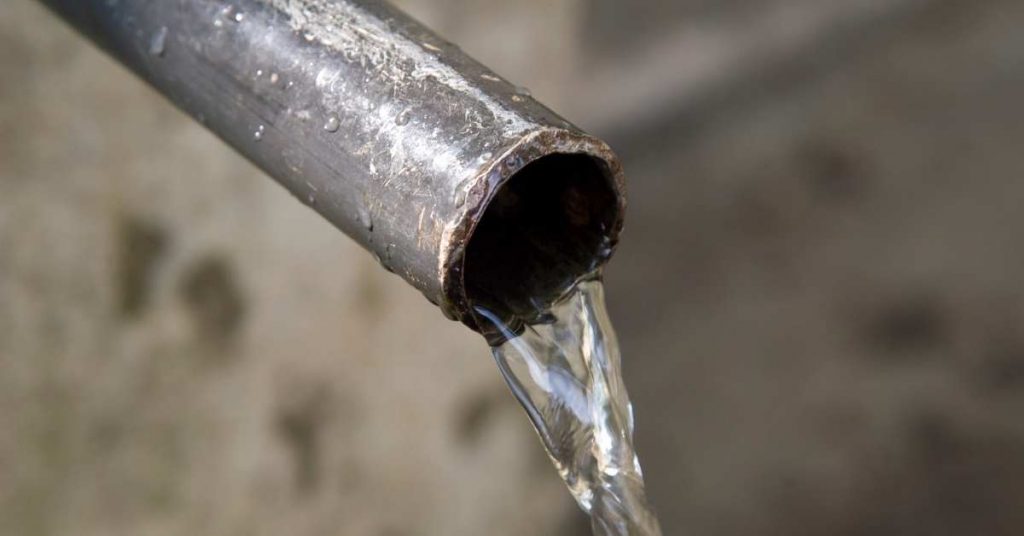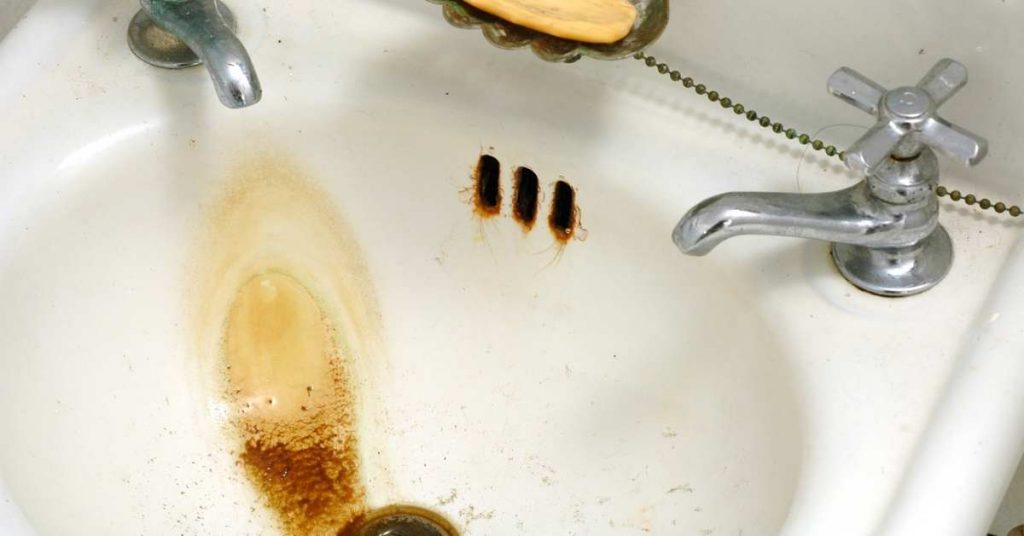In the early 1900s, galvanized pipes were the best pipes to install in homes. They were safer than lead pipes and longer lasting than pure steel pipes? What happened to these dream pipes than they now need to be replaced?

Galvanized pipes are susceptible to corrosion and blockages which results in low water pressure in the house and even leaks. They also cause water discoloration and staining of porcelain fixtures like sinks, toilets and bathtubs.
There are also health hazards associated with these pipes.
If you have been experiencing low water pressure especially in the hot water lines, brown toilet rings, a brownish discoloration in your water or brown stains in your sinks and bathtubs, you probably need to replace your galvanized house piping.
Although you can cut and replace the piece of pipe that is most affected, that is just a temporary fix. The long-term and best fix is to replace the entire house plumbing with pipes of a better material, especially if you are planning to do a house renovation.
What Are Galvanized Pipes?

Galvanized pipes are simple steel pipes coated in zinc. A piece of steel pipe is usually dipped in molten zinc and dried off. The production of galvanized pipes started when lead water pipes were being phased out.
Before galvanized pipes started being used in houses, lead pipes were widely used. Homeowners and contractors soon stopped using the lead pipes as they were quite soft but primarily it was because it was discovered that they caused lead poisoning.
While steel pipes are quite strong and safe to use, they could not be used as they were. This is because steel rusts and corrodes in the presence of water and oxygen, both of which are readily available inside a water pipe.
As a matter of fact, the chemical name for rust is iron oxide. Steel is basically iron mixed with carbon to improve its strength.
To prevent steel pipes from corroding and rusting, they were galvanized using molten zinc. The thinking at that time was that with galvanized pipes, you are able to avoid the health hazards caused by lead pipes and you also end up with a strong and long-lasting pipes.
Things did not work as envisioned though. The protective zinc coating inside the pipes did not last as long as people thought it would, especially when subjected to hot water.
Although the outside of the galvanized pipes will still look great, the zinc coating on the inside of the pipes starts to peel off, exposing the steel pipe to water and oxygen and hence corrosion is inevitable.
Let us now look in more details the reasons why you need to replace your galvanized pipes.
Why You Need to Replace Galvanized Pipes
If you are planning a bathroom renovation or even a whole house renovation, you need to replace galvanized pipes if you have them. Whenever you are doing a major house renovation, you want it to serve you for a few decades without having to do it again.
In this post, I will give you a quick answer and a long answer. Let us start with a quick and straightforward answer:
- Corrosion and Rust: Galvanized steel pipes are prone to corrosion and rust over time. As they deteriorate, the interior diameter can become constricted, reducing water flow and potentially causing leaks.
- Health Concerns: Many older galvanized pipes were coated with zinc, which can erode over time, leading to the release of potentially harmful substances into the water supply, including lead. This poses health risks, especially if your household relies on these pipes for drinking water.
- Reduced Water Quality: Corrosion and buildup within galvanized pipes can lead to poor water quality, with water appearing discolored or having an unpleasant taste and odor.
- Lower Water Pressure: Accumulated rust and sediment can clog galvanized pipes, causing reduced water pressure throughout your plumbing system.
- Increased Maintenance Costs: Ongoing repairs to fix leaks, blockages, and other issues associated with aging galvanized pipes can add up, making replacement a cost-effective long-term solution.
- Home Value: Homes with galvanized steel plumbing may have reduced resale value, as potential buyers often prefer modern, reliable plumbing systems.
- Environmental Concerns: Replacing galvanized steel pipes with more environmentally friendly materials can contribute to reduced resource consumption and a smaller carbon footprint.
And now onto the long answer:
1. Low water pressure in the House
The pipes in your house have a standard internal diameter that is designed to supply water throughout your house with sufficient pressure. If there is a reduction in the pipe’s internal diameter, water pressure in your house will also be reduced as well.
This is what happens when all the zinc coating inside the galvanized pipes has peeled off and corrosion starts. Rust builds up inside your pipes effectively blocking the pipe and in return restricting the flow of water.

This usually happens in the hot water lines more than in the cold waters lines. The reason for this is that in most chemical reactions (rusting/corrosion being one of them), an increase in temperature results in an increased in the rate of reaction.
There are solution out there in the market available to increase your house water pressure. One of them include pumping a polymer through your plumbing. That is an expensive and temporary solution. If you need a long-term solution you will need to remove and replace the galvanized pipes with something better.
2. Water Leaks in the House
Don’t wait until a leak happens in your house. Leaks can cause a lot of damage especially if it happens when you are not at home.
A leak in a galvanized pipe is usually caused by corrosion as well. Excessive corrosion at a certain part of the pipe weakens it. With a time, a small hole develops and water starts to drip out.
If not fixed as soon as possible, a small leak can develop into a pipe burst which will cost thousands of dollars to repair. The best thing to do therefore is to replace the galvanized pipes and not wait until there is a leak.
What if there is a water leak already? How do you know if your house has a water leak? Turn off all the faucets and fixtures in your house including washing machine and dishwasher and monitor the water meter for 2 hours or so.
If you notice any change in your meter reading then you definitely have a leak in your house. Call in a plumber and let them advise you on the cost of replacing your galvanized pipes.
3. Water Discoloration
Needless to say, water from your faucets should be colorless. If you however notice or a reddish brown discoloration for the first few seconds after turning on your faucet, you have corroded galvanized pipes in your house.
Rust (which is the reddish brown color in your water) indicates that the integrity of the house plumbing is deteriorating. This is what happens before the pipes crack due to the water pressure pushing against them.
Another good sign of corroded galvanized pipes is frequent clogging of your shower heads and faucets aerators. Faucet aerators are the little attachments with fine holes at the end of a faucet spout.
4. Staining of Porcelain Fixtures

Are you having brown stains in your porcelain fixtures? In toilets, the discoloration can be so severe that it forms what is called a toilet ring around the toilet bowl’s waterline.
Although in most cases the discoloration is caused by hard water from the source, galvanized pipes can also cause it. This is because the water dissolves iron oxide (rust) from the pipes which is deposited in your fixtures.
If you notice brown stains in your porcelain fixtures then you indeed have galvanized pipes in your house that you need to replace. Porcelain fixtures are not particularly cheap and attempting to remove the stains can scratch them badly.
5. Health Issues
There is no guarantee that the zinc used to coat the steel pipes or even the steel pipes themselves are pure. They could contain traces of lead and other metals.
As the zinc coating erodes, it dissolves in the water and flows to your faucets where it could be ingested. There are also other metal compounds that will dissolve in the water and if consumed will have negative effects on your overall wellbeing.
How Do I know if I have Galvanized Pipes?
Galvanized pipe are fairly easy to identify. Grab a screwdriver and head to where you have exposed pipes in your house. Scratch the surface of pipe and note its color.
If you have a greyish or silverish pipe then you indeed have galvanized pipes. The pipe also has to be magnetic.
As I have already mentioned, galvanized pipes are basically steel pipes and steel pipes are made of iron and carbon. Ferrous (or iron) compounds are usually attracted to magnets. If you therefore find a grey pipe that is not magnetic, know that you have a lead pipe which you should replace as well.
The best place to test the kind of pipe you have in your house is in the basement where there are lots of exposed pipes. Better still, try to attach a magnet to the cold water pipe connected to your water heater.
If the magnet is attracted to the pipe then without a doubt you have galvanized pipes in your home. Plan to replace them as soon as you can.
Alternatives to Galvanized Pipes
If you have made a decision to remove the galvanized pipes in your house, I know 2 good alternatives that would work well for you.
The first one is copper. Copper pipes are strong and therefore long lasting, and are safe to use. They however have their own disadvantages.
The main disadvantage of copper pipes is that they are quite expensive. Not only are they expensive to purchase but also to install. This is because they will need you to cut through your wall to install them. Copper pipes will also corrode in some areas in the United States.
The alternative I recommend as a replacement for galvanized pipes is PEX pipes. PEX pipes are cheap and easy to install. You don’t even need to cut through your wall to install them.
Due to their flexibility, you just make a small opening in you wall and snake them through. They are fantastic for winter too. They expand more than other pipes and are therefore less likely to burst.
With PEX pipes you will need to control rodents in your property. PEX pipes also warp when exposed to direct sunlight and also fail when exposed to chlorine.
According to We Do Repipes, the cost of replacing galvanized pipes with copper pipes for a 2 -bedroom house is $8000-$10000 while it costs about $6000-$8000 to repipe the same size of house using PEX pipes.





